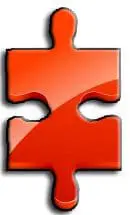 Inbound marketing can certainly be likened to a puzzle. Pieces fit together to create an overall picture and result. When a piece is missing, frustration mounts and you’re left feeling less than satisfied. Your Unique Positioning Statement (UPS) or Unique Selling Proposition (USP) is one of your greatest assets in your marketing arsenal, and yet it’s a really important piece of the puzzle that’s often overlooked.
Inbound marketing can certainly be likened to a puzzle. Pieces fit together to create an overall picture and result. When a piece is missing, frustration mounts and you’re left feeling less than satisfied. Your Unique Positioning Statement (UPS) or Unique Selling Proposition (USP) is one of your greatest assets in your marketing arsenal, and yet it’s a really important piece of the puzzle that’s often overlooked.
It’s a highly competitive world out there but, even thousands of years ago, King Solomon wrote, “there’s nothing new under the sun.” So, I want to ask you, what makes you so special? If you don’t know the answer to, “what can you offer me that your competitor down the street can’t?” then why should I choose you? What differentiates you from your competition? In order to position yourself as an industry leader and really rise above your competition, this is a question you must answer now.
What is your competitive advantage? The term, Unique Selling Proposition was originally developed in the 1940s by marketing guru, Rosser Reeves, which he defined as “the ability to communicate a distinct and unique benefit a product offers a consumer which only that specific product or service or brand can provide.” Reeves was concerned that advertising was losing track of its purpose and becoming more about art and less about selling the product. He said:
“Each advertisement must make a proposition to the consumer. Not just words, not just product puffery, not just show-window advertising. Each advertisement must say to each reader: ‘Buy this product and you will get this specific benefit.’ The proposition must be one that the competition either cannot, or does not, offer. It must be unique; either a uniqueness of the brand or a claim not otherwise made in that particular field of advertising. The proposition must be so strong that it can move the mass millions…”
-Reeves, 1961
 Mistakenly, business owners assume their potential customers will understand what makes their business different or better than the competitors, and overlook the positioning statement. What they fail to recognize, however, is the competitive advantage they’d have if they were to take the time to skillfully craft and implement one into their message.
Mistakenly, business owners assume their potential customers will understand what makes their business different or better than the competitors, and overlook the positioning statement. What they fail to recognize, however, is the competitive advantage they’d have if they were to take the time to skillfully craft and implement one into their message.
Consider these unique USPs that have stood the test of time and earned our business:
- Pain: I have to get this package delivered quick! USP: “When it absolutely, positively has to be there overnight.” (Federal Express)
- Pain: The kids are starving, but mom an dad are too tired to cook… USP: “Pizza delivered in 30 minutes or it’s free.” (Domino’s Pizza)
- Pain: You are sick, feel terrible, and can’t sleep. USP: “The nighttime, coughing, achy, sniffling, stuffy head, fever, so you rest medicine.” (Nyquil)
Clearly, these business’s understood the pain of their audience and were able to create a slogan that promised to deliver. Reeves asserted that an effective USP needed to accomplish the following four objectives:
- It must make a specific proposition to the customer: “buy this product, and you will get this specific benefit.”
- The proposition must be unique or “perceived unique” by your customers – something your competitors don’t have or offer and would not be able to imitate easily.
- It should be so compelling and relevant to your ideal customers that it entices them to try your product or service because it addresses their needs, fears, frustrations, or desires.
- It must be simple and easy to articulate and communicate so your customers quickly understand that your product or service offers them unique benefits.
Tap the Unconscious Mind of Your Customer
 The real power of the USP comes from its connection to the unconscious mind. Therefore, the importance of understanding your “collective” market can not be overstated because a powerful positioning statement ties into the most emotionally stimulating elements of your customers’ experience with your business. You’ll need to think like your customer and gain a deep understanding of their pain points as well as what they really want from your product or service. Whether it’s quality or convenience, friendly customer service or reliability, you should realize that people don’t patronize your business because of price alone. Find out what motivates and brings gratification to your demographic. Knowing the desires and motivations of your customers will help you to articulate the solution to their problem. Here are some steps to get you thinking…
The real power of the USP comes from its connection to the unconscious mind. Therefore, the importance of understanding your “collective” market can not be overstated because a powerful positioning statement ties into the most emotionally stimulating elements of your customers’ experience with your business. You’ll need to think like your customer and gain a deep understanding of their pain points as well as what they really want from your product or service. Whether it’s quality or convenience, friendly customer service or reliability, you should realize that people don’t patronize your business because of price alone. Find out what motivates and brings gratification to your demographic. Knowing the desires and motivations of your customers will help you to articulate the solution to their problem. Here are some steps to get you thinking…
- What are the biggest benefits of your product or service? Think in terms of what your business does for your customer and the end result they desire from a product or service like yours.
- Be unique. Your UPS is what separates you from the competition and sets up a ‘buying criteria’ that illustrates your company is the most logical choice, and your product or service is the ‘must have.’
- Solve an industry pain point or performance gap (the need that exists between the current situation and the desired objectives). Many businesses that base their UPS on industry performance gaps are successful. So, what are the most frustrating things your customer experiences when working with you or your industry in general? Alleviate that “pain” in your UPS, and write it so it creates a desire as well as an urgency.
- Condense into one clear and concise sentence. The most powerful UPS are so perfectly written, you cannot change or move even a single word. Each word earns you money by selling your product or service. After you get your USP written, your advertising and marketing copy will practically write itself.
- Be specific and offer proof. Consumers are skeptical of advertising claims that companies make. So, alleviate their skepticism by being specific and offering proof when possible. Deliver on your UPS’s promise. Be bold when developing your UPS but be careful to ensure that your can deliver. Your UPS should have promises and guarantees that capture your audience’s attention and compels them to respond to your message. Having a strong UPS can make your business a big success, or a big failure if you don’t deliver on it thereby ruining your reputation.
Some additional guidelines for crafting your USP…
- Make it short; a phrase over a sentence will stay top of mind.
- Keep it vague enough to leave room for the imagination of your reader.
- Convey a positive sentiment
- Give it impact and emotion
- Focus on the promise of emotional gratification, ie., the result or benefit, vs. the work or features you offer.
- Make it consistent with the general perception of your business and what you have learned of your customer’s gratification mode and purchase preferences.
 Implementing this piece into your puzzle has the potential to drive more traffic to you in profound ways. However, don’t feel that you have to be “married” to your initial efforts. Businesses evolve and grow over time as they continually learn their customer’s needs and therefore, so can and should your UPS. Knowing your customer and what drives their behavior is ultimately, how you reach them with your message anyway.
Implementing this piece into your puzzle has the potential to drive more traffic to you in profound ways. However, don’t feel that you have to be “married” to your initial efforts. Businesses evolve and grow over time as they continually learn their customer’s needs and therefore, so can and should your UPS. Knowing your customer and what drives their behavior is ultimately, how you reach them with your message anyway.





